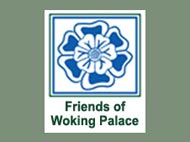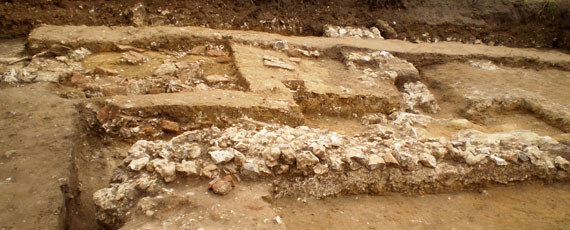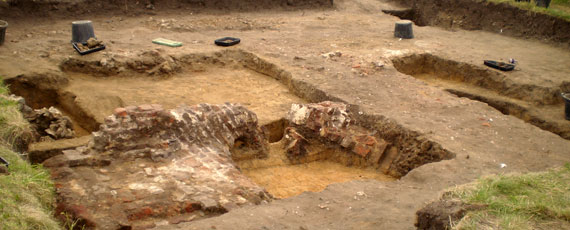Woking Palace Archaeological Project 2011
Back on Site Again - Week One
Week 3 – A frantic final week
This week the weather was kind to the project which allowed all members of the project to put in a sterling effort to catch up on the work missed through poor weather previously. As the levels in the trenches went down so the story of the development of the medieval manor and its conversion to Tudor Palace began to become clearer.
As in the previous weeks, each day a new group of people who have not dug before have signed in to join the “Dig for a Day” scheme run by SCC Community Archaeologists while experienced volunteers from Surrey Archaeological Society have continued their work under the direction of the professional team.
The trench close to the former gatehouse revealed a sequence of building development from the early period of the site through to Tudor times showing floor levels that were steadily raised, possibly due to rising water table. It does not seem that in this area the Tudor kings converted the medieval buildings to the brick style associated with their other palaces; they merely carried out conversions such as the addition of fireplaces. The major Tudor buildings seem concentrated closer to the centre of the site. Boreholes drilled by Quest close to the gatehouse showed that in the past the moat had been much wider here than it is today. Scientists from Quest have been using the flotation tank to obtain samples for analysis of environmental evidence.
In the trench to the north of the Tudor Great Hall very large brick foundations were uncovered. These, like those under the only remaining standing brick walls on the site, were built on shallow arches. These arches reduced the number of bricks needed for the foundations of a building of several stories and also helped to stabilise a building constructed on less favourable ground conditions. Unfortunately no floor levels were left following the demolition of the Palace in the early 17th century but the large projection in the north wall of this building and the large amount of butchered bone could lead to an interpretation of this as the kitchen that served Henry VIII’s Great Hall.
Meanwhile close to the vaulted stone building the fine weather allowed the trench to dry out sufficiently to permit work to restart there. The signs of a number of walls that had been robbed of their building material were uncovered and indicated the lines of the foundations of the complex of buildings that once stood here. In the very last days of the digging a few blocks of possibly the earliest building on the site were uncovered together with an unusual feature that seems to be associated with water management. Further work analysing the finds from here will help to clarify what these features represent.
Now that the digging is over for this year the final recording is taking place prior to all the trenches being back-filled. The finds have all been taken to be studied in detail and the work of understanding all the evidence has begun. In due course this will help us to understand more about the development of the medieval manor into the Tudor Palace.
Video Blogs for 2011 and 2010
View the video blogs on the Exploring Surrey's Past website: www.exploringsurreyspast.org.uk/wokingpalacevideoblog.
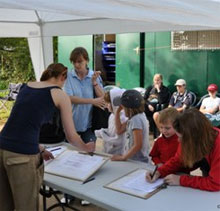
Fun activities |
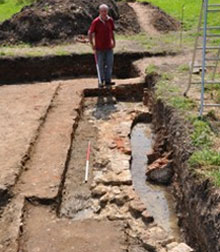
What is it? |
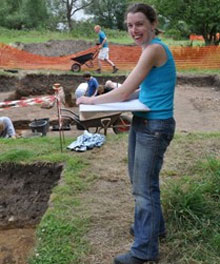
Abby recording details |
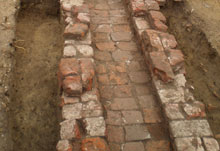
A brick drain |
